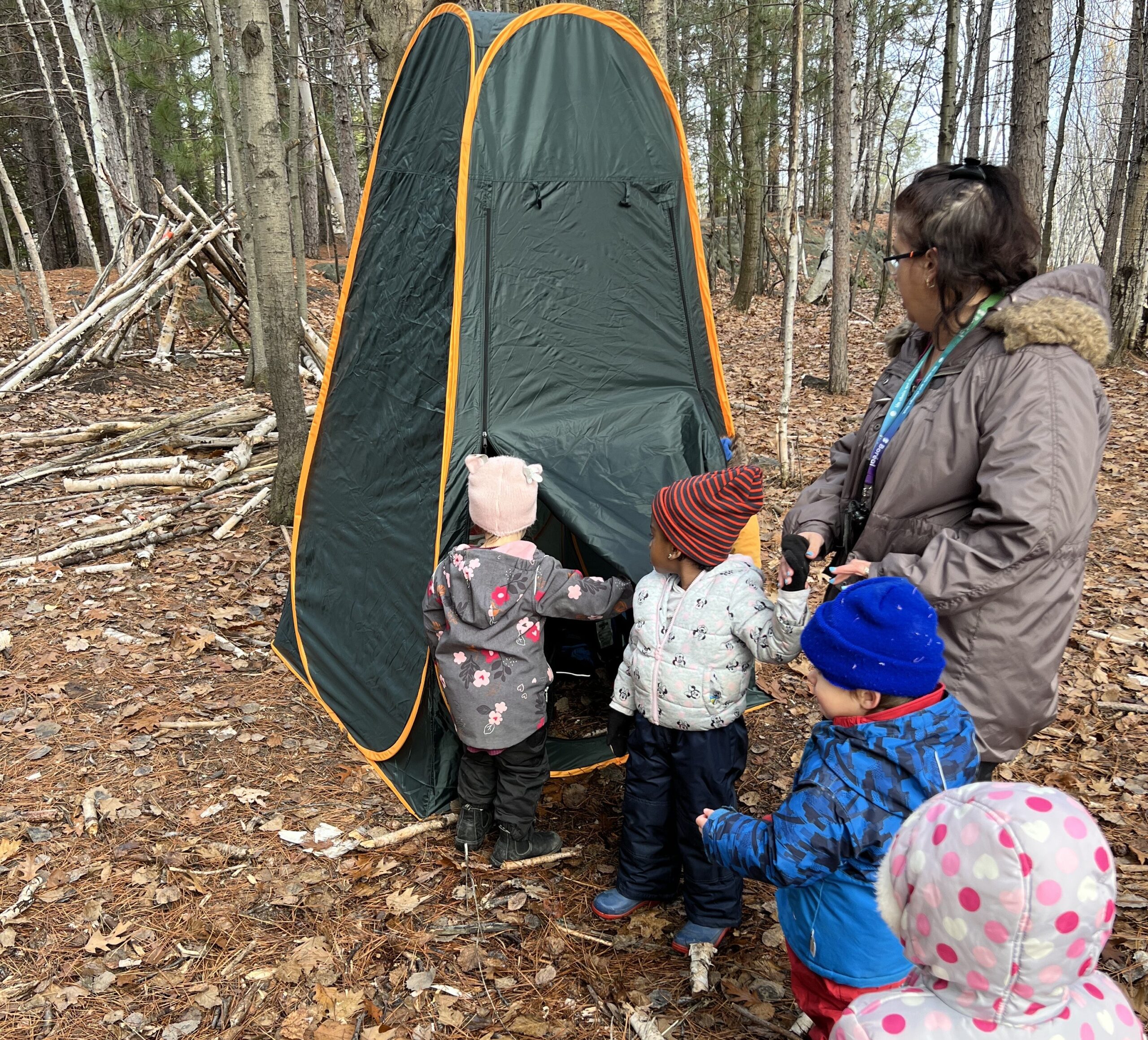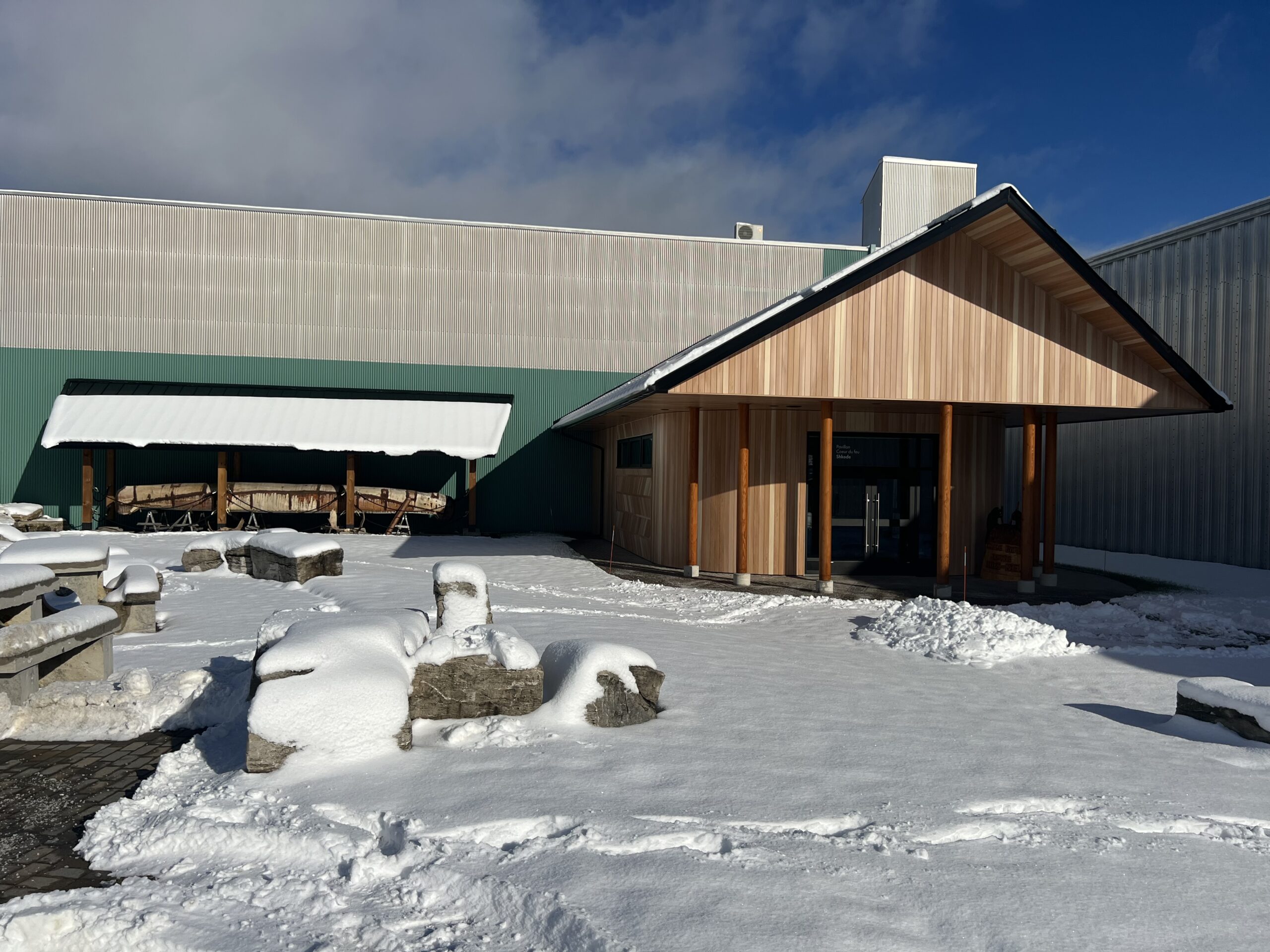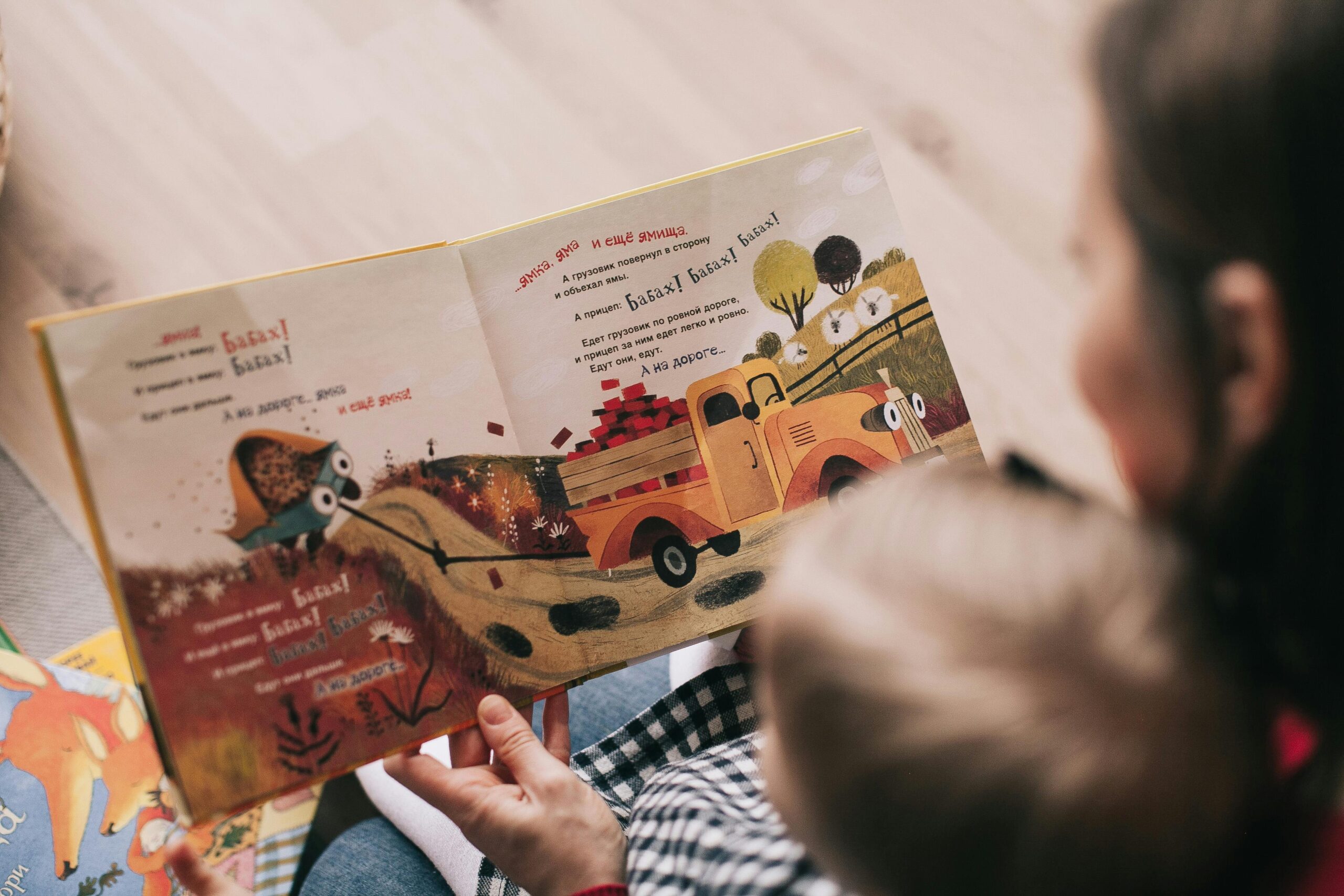A wonderful surprise at Azilda
Autumn is already well underway, and temperatures are gradually dropping, but that’s not stopping us from enjoying nature and continuing to develop the forest project in the various Carrefour Francophone centres. Here is a roundup of the latest news, whether in the forest with the children or in our educational projects.
What's happening in childcare centres?
For the first time at Scène des tout-petits, the educational team went out without the accompaniment of Mathieu Lambert, the forest project coordinator, or Erick Dubois, the project officer. It is a big step towards greater autonomy for nature outings!
This outing was an opportunity for them to prepare the ground for the creation of a future children’s masterpiece in the forest. A large rock in the forest will serve as a support for a painting created entirely by the children. Non-polluting paint will of course be used, as we want to take care of our environment.
Before they could start painting, the team and the children took care to clean the rock thoroughly. We ca not wait to see what happens next in the forest, and we will be sure to share it with you!
This outdoor activity is a wonderful example of how creativity can be integrated with learning in nature. We are proud of the commitment of the teaching staff and the enthusiasm of the children to take part in such stimulating projects.
And while the budding artists at Scène des tout-petits let their creativity run wild, at Boréal des tout-petits, the focus is on making nature outings comfortable and accessible.
A new solution for Boréal's forest outings for toddlers 🚻
At Boréal des tout-petits, we have come up with a new solution to make outings in the forest much more pleasant and practical for children.
Since the outhouse has been out of service, we have been thinking about a sustainable, environmentally-friendly alternative. The solution? A portable shower tent, which now doubles up as a forest toilet wall.
The system is simple, practical and unobtrusive: it gives the children a private space to relieve themselves, and is easy to store and replace each day.
The children have enthusiastically embraced this novelty! We are delighted to be able to offer these outdoor moments in the best possible conditions!
A wonderful surprise for Azilda 🦉
Mathieu Lambert and Erick Dubois recently landscaped the forest at the Boussole des tout-petits childcare centre in Azilda. They created a unique space for play and exploration, a forest trail specially designed for children. The trail offers a space that invites children to sit, listen to stories or let their imaginations run wild.
During the development, they had the chance to discover a barred owl. This majestic species, emblematic of Ontario, is always magnificent to observe. Mathieu and Erick were amazed to come across this owl, nestling discreetly among the branches. It was a magical moment, a reminder of just how many hidden treasures there are in the forest.
This is not the first time the team has spotted incredible animals in the forest, so it is a safe bet that the kids will probably have the chance to see this splendid owl one day!
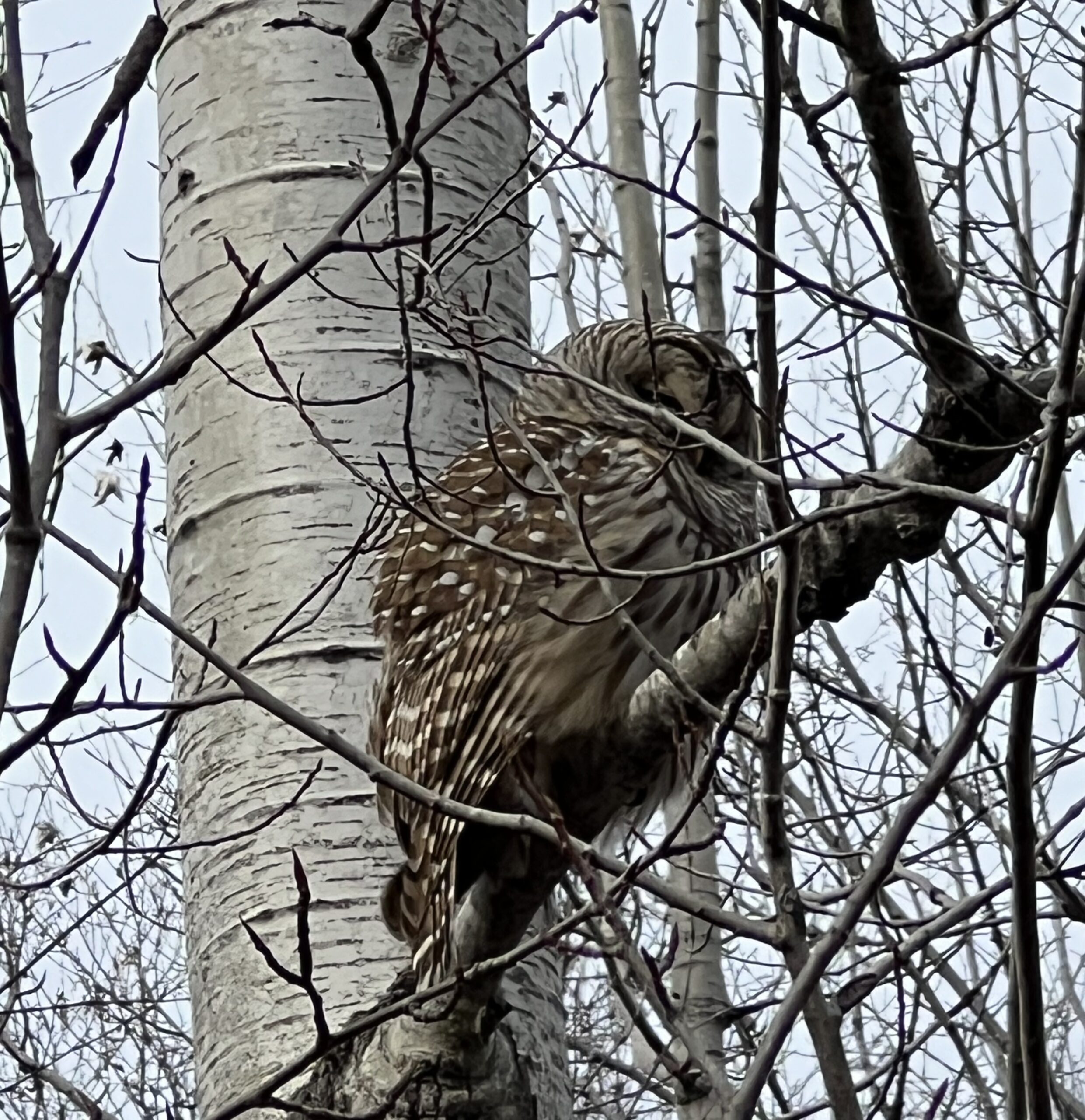
A bird with a unique character
The Barred Owl, recognizable by its large facial disks framing dark irises, has gray-brown plumage spotted with white. Its distinctive stripes run horizontally across its chest and vertically down its belly, giving it a singularly elegant appearance. Unlike other owls, it does not wear egrets on its head, but its rounded silhouette and piercing gaze are enough to make it unforgettable.
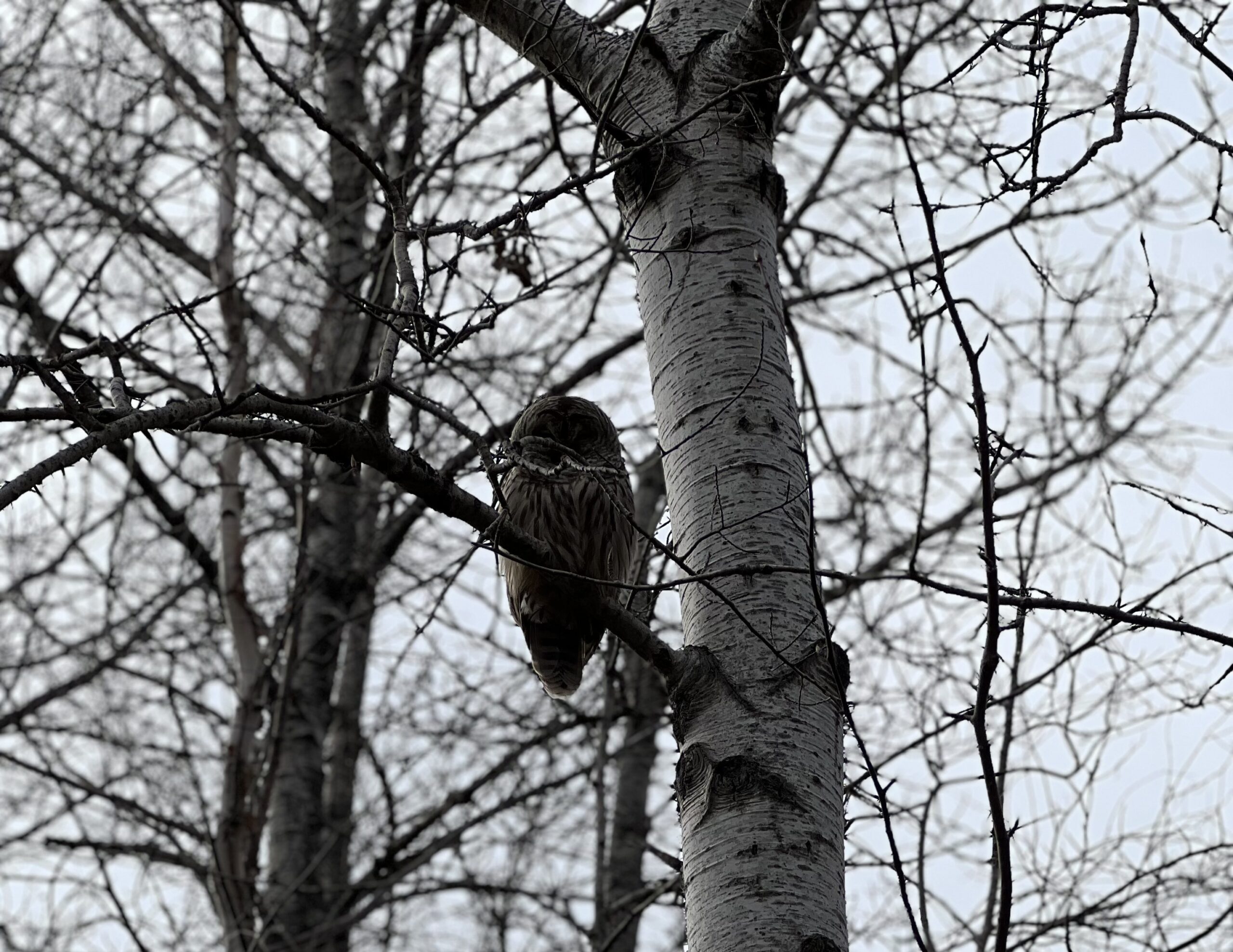
A virtuoso of the forest
Famous for its impressive vocal repertoire, the Barred Owl can emit piercing hooting, eerie mewing and even melodious duets in the company of its partner. Among its most characteristic calls is a series of eight distinct sounds, followed by a silence in which it waits attentively for a response. Her cries, sometimes compared to devilish cackles, add a mystical aura to this nocturnal bird.
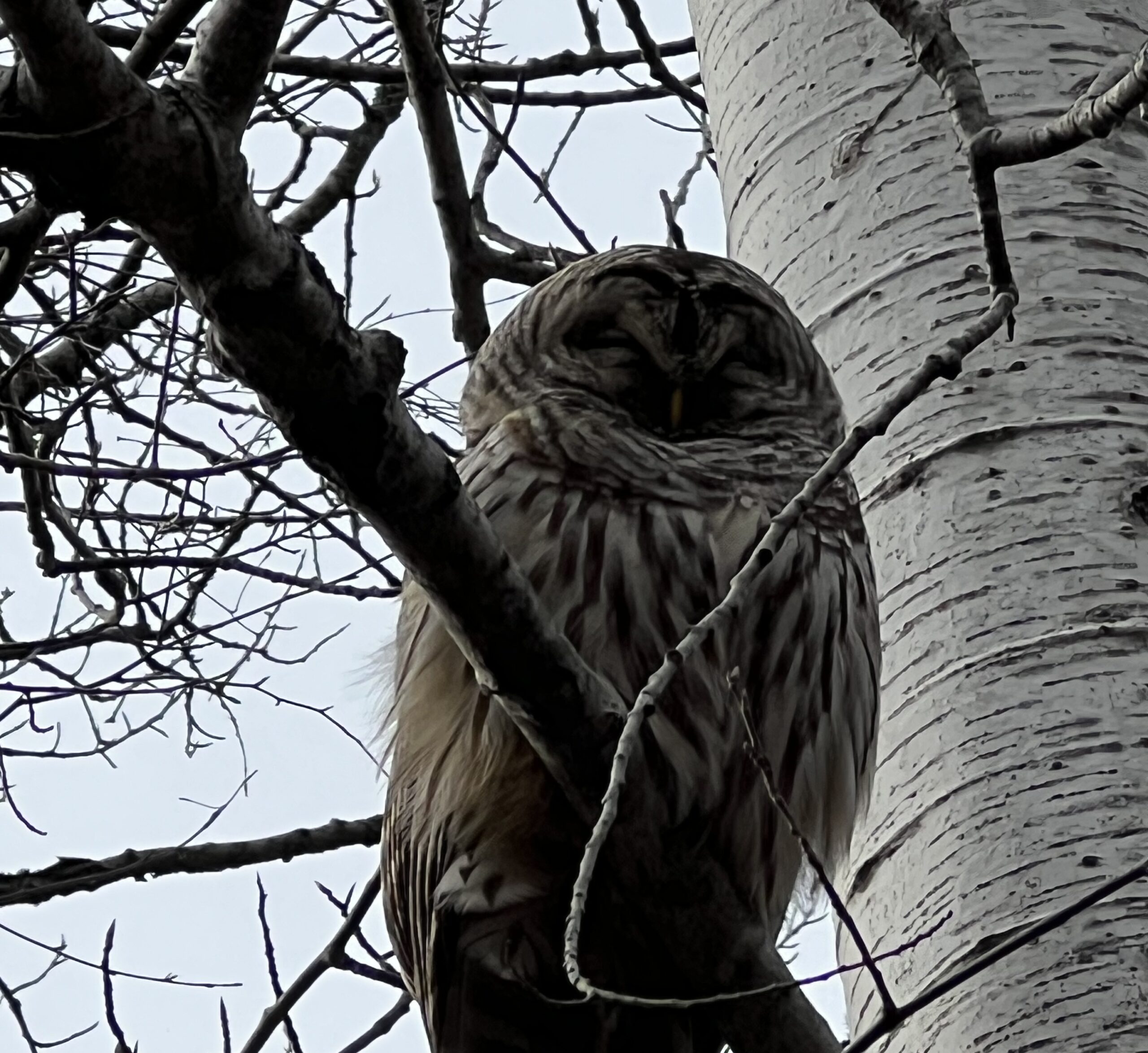
Its habitat and lifestyle
The Barred Owl prefers mixed forests with large mature trees, where it finds ideal nesting cavities. Although sedentary and loyal to its territory, it may extend it in winter if food resources become scarce. Mainly nocturnal, it is an expert in the art of silent hunting, feeding on small rodents, insects, and sometimes even frogs or reptiles. Its supple feathers enable it to fly silently, although it must flap its wings rapidly to compensate for low lift.
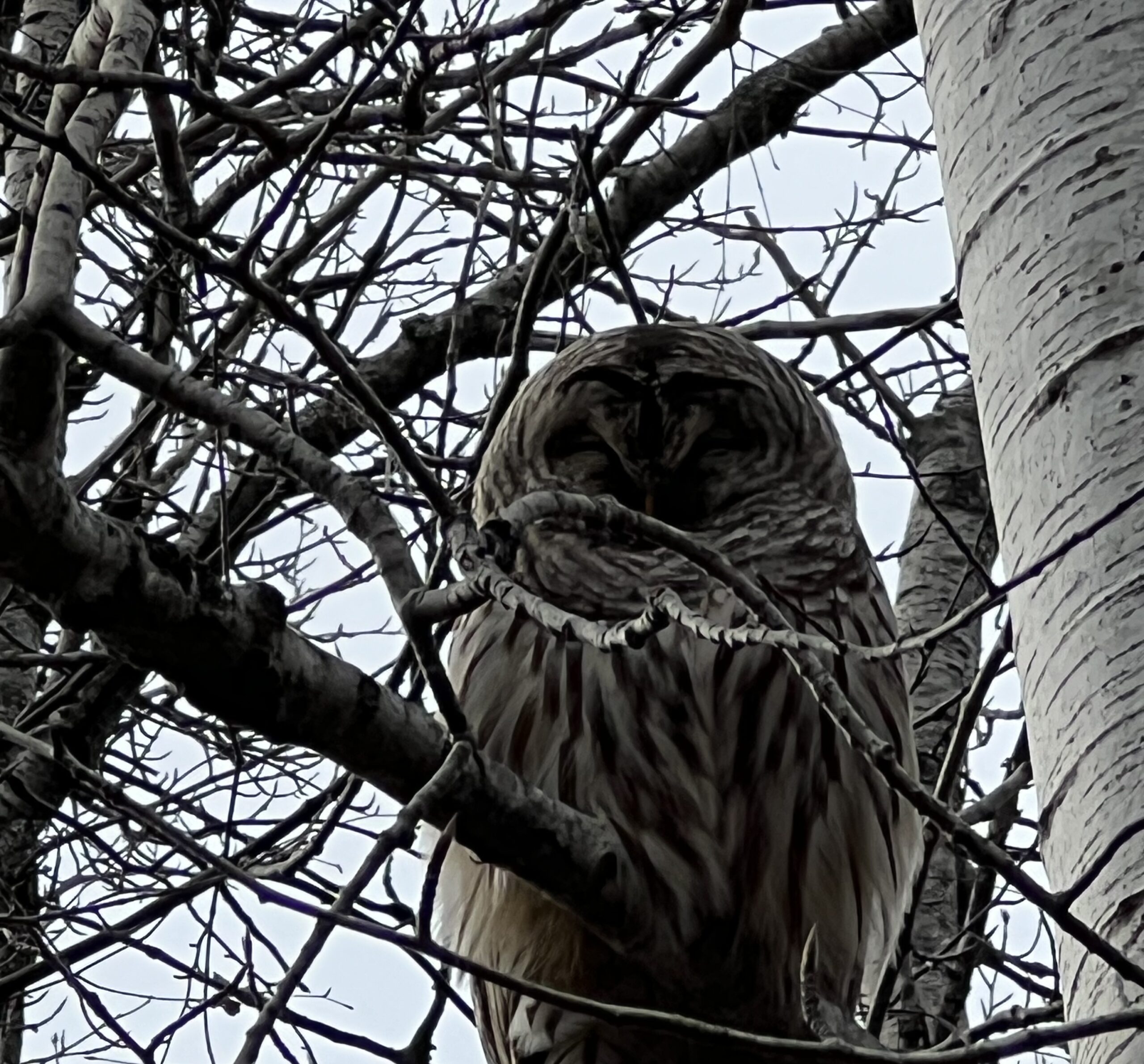
The secret life of a discreet predator
Monogamous, barred owls form lifelong pairs, sharing a territory of around 1.6 km². In March, the female usually lays two eggs in a tree cavity or abandoned nest, and incubates them for almost a month. There is no shortage of dangers for this species: predators, collisions with vehicles and habitat destruction threaten their survival. Yet their population remains stable, thanks to their ability to adapt to new environments.
A few rules to follow if you're lucky enough to come across one
If you come across a barred owl or any other owl in the forest with your children, it is essential to follow a few instructions to preserve their peace and quiet:
- Keep your distance: If the bird shows signs of nervousness (repetitive movements, change of position), back away immediately. Never approach nests, as this could attract predators.
- Never feed an owl: Giving them food can expose them to dangers such as collisions with vehicles or malicious human interaction.
Respecting these rules helps preserve these magnificent creatures and maintain the delicate balance of our ecosystem.
First Nations, Métis and Inuit Education Centre and Shkode Pavilion “Heart of Fire” 🔥
While the forest continues to amaze us with its wildlife and natural treasures, another knowledge-rich space has recently opened its doors to inspire us even further: the First Nations, Métis and Inuit Education Centre and Shkode Pavilion “Heart of Fire”, recently inaugurated at Collège Boréal. This unique space is entirely dedicated to Aboriginal education and culture.
Native knowledge
The First Nations, Métis and Inuit Education Centre and Shkode Pavilion is much more than a building: it is a symbol of sharing, learning and celebrating Aboriginal traditions. It offers a valuable opportunity to raise children’s awareness of the wealth of ancestral knowledge and the importance of respecting the cultures that shape our community.
For our little ones at Boréal, this inauguration marks the start of a rich and promising program. Once a month, dedicated events will take place, allowing children to discover aboriginal customs, stories and practices.
Continuity in cultural awareness
Long before the opening of the Shkode Pavilion, Boréal des tout-petits children had already had the opportunity to be introduced to aboriginal culture, notably during visits to the Louis Riel Centre. During these privileged moments, they learned to say “Miigwetch” (thank you) in the Ojibway language, a strong gesture of recognition and respect towards First Nations, Métis and Inuit.
A great step forward
We are delighted to see how the various early childhood centres continue to invest in outdoor activities, enabling children to grow and flourish in harmony with nature. We would like to extend our warmest thanks to all those who contribute to these wonderful initiatives: educators, families and partners. Let’s continue to cultivate this precious relationship with nature, for our children of today and tomorrow.
Miigwetch, and see you soon for new adventures!
Carrefour francophone would like to say thank you
Our project partners: PLAYLearnThink, Collège Boréal, Centre Louis Riel; our research partners: Child and Family Social Innovation Centre and our funder: Employment and Social Development Canada.

